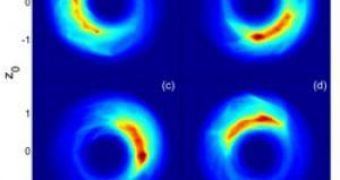In 1913, Danish physicist Niels Bohr proposed for the first time a model describing the atom as a system inside which the electrons revolve around a central bundle of matter called nucleus, similarly to the way planets in the solar system move around the Sun. Nearly a decade later, Bohr would receive the Nobel Prize for physics for his contribution in the study of the atom, although quantum mechanics later proved that electrons don't in fact move in certain orbits around the nucleus, but take a wave-like distribution.
Niels Bohr's model was extremely successful in explaining most of the chemical and physical properties of the atom. Now, almost a century after Bohr forwarded his theory, physicists at the Rice University have created a 'Bohr atom' for the first time, by placing an electron in a far orbit around the nucleus of a potassium atom.
"In a sufficiently large system, the quantum effects at the atomic scale can transition into the classical mechanics found in Bohr's model. Using highly excited Rydberg atoms and a series of pulsed electric fields, we were able to manipulate the electron motion and create circular, planet-like states," said professor of Physics and Astronomy Barry Dunning, leader of the new study.
With the help of a laser system the researching team took the potassium atoms into a highly excited state, then created a localized electron orbiting around the nucleus by producing a series of short electric pulses. As compared to a regular potassium atom, the newly created 'Bohr atom' is absolutely gigantic measuring nearly one millimeter across.
"Our measurements show that the electrons remain localized for several orbits and behave much as classical particles," Dunning added. He believes that the newly made discovery, with the help of considerable contributions of scientists from Oak Ridge National Laboratory and Vienna University of Technology, the 'Bohr atom' could provide the background required in the development of future quantum computers and may even help in the study of classical and quantum chaos.

 14 DAY TRIAL //
14 DAY TRIAL //